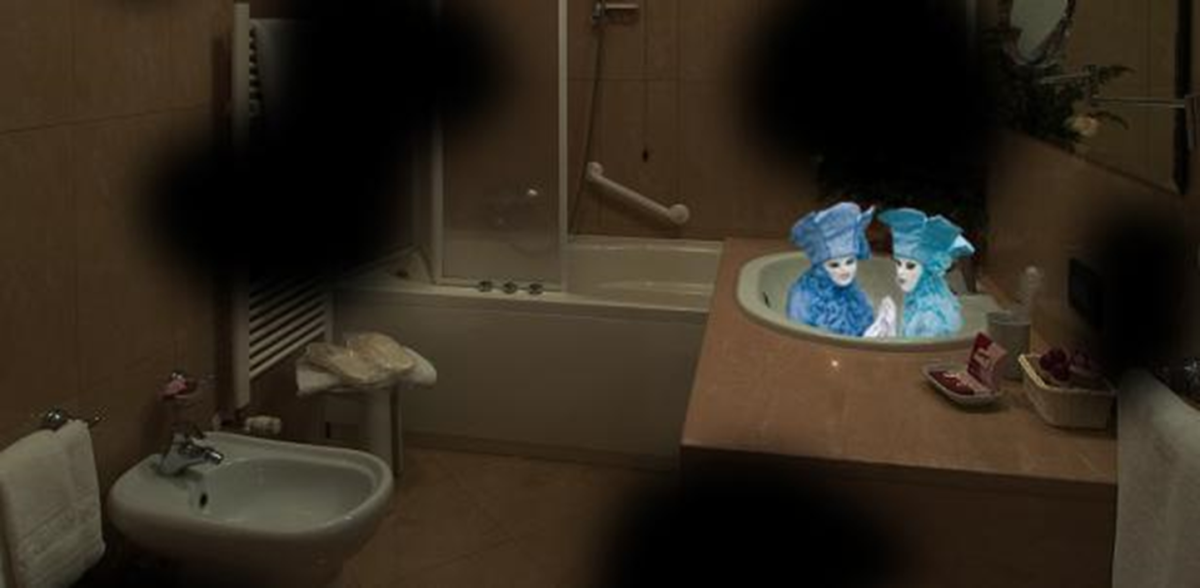Little men holding umbrellas at the end of their bed. A woman in a red dress sweeping the floor. Soldiers marching down the street. New Canadian research suggests that those dealing with vision loss encounter hallucinations.

Scientists out of the Canadian National Institute for the Blind say that as many as 20 per cent of Canadians encounter visual hallucinations — seeing patterns, shapes, and other images from their memory — as their eyesight slips away.
The doctors say their latest findings about Charles Bonnet Syndrome (CBS) shed light on the condition the medical community doesn’t know much about.
“It is really important to reassure people that they’re not going crazy and that visual hallucinations happen because of vision loss. It will often go away with time, some people might see them for a minute or two a day, some longer,” Dr. Keith Gordon, the study’s lead author, told Global News.
“People are afraid to tell their family, friends and even doctors they’re experiencing hallucinations for fear of it being misunderstood as mental illness,” he explained.
READ MORE: Canadian doctors pioneer new technique that restores sensation to eye
The CNIB says its study is the largest and most comprehensive snapshot of CBS in Canadians. It’s the first to look at CBS triggered by vision loss from three common eye diseases: macular degeneration, diabetic retinopathy and glaucoma. About 2,565 people took part in the study and their vision ranged from about 20/40 to legally blind.
- Buzz kill? Gen Z less interested in coffee than older Canadians, survey shows
- ‘She gets to be 10’: Ontario child’s heart donated to girl the same age
- Bird flu risk to humans an ‘enormous concern,’ WHO says. Here’s what to know
- Canada updating sperm donor screening criteria for men who have sex with men
Those grappling with dementia or Parkinson’s disease, for example, also deal with hallucinations, but there’s a distinct difference with CBS patients, Gordon said.
“CBS hallucinations arise strictly from vision loss and people who experience it know what they’re seeing isn’t real. The key thing here is there is no reality associated with these hallucinations,” Gordon said.
Scientists haven’t unravelled why these hallucinations occur. They suspect that it’s the brain trying to fill in information that would normally be obtained from the eyes.
The hallucinations only affect sight, not hearing, smell or touch. The hallucinations could seem “real,” such as cows in a field when they see an empty field, or even “surreal,” such as dragons. Typically, people see patterns or simple shapes.
A common theme that’s been reported to Gordon is seeing “little people.” Patients have also told Gordon about vivid images of maps of hiking paths they took as children.
(Ben Simpson/Global News)
The study suggests that as eye vision worsens, the chances of hallucinating increases, too.
Jack Hunter, a Scottish expat, was diagnosed with glaucoma in his right eye and lost vision in his left eye in 2009. He has about 25 per cent of his vision now. He can cook, pick up groceries and live his day-to-day life, but he can’t drive or read the newspaper.
The hallucinations started just after he had cataracts removed from his eyes. He was reading a book in his apartment when he saw a woman in his peripheral vision.
“It appeared to me as a woman, sweeping the floor, and all I could see was the outline of her profile,” he said.
He was troubled so he went to his ophthalmologist who explained: “Because your eyes aren’t performing the way they could be, they’re trying to compensate by showing flashes from your memory.”
“I accepted what he told me,” Hunter told Global News.
READ MORE: Canadian doctors find key marker to help predict eye disease in diabetics
Gordon said CBS patients pick up tricks to make the hallucinations go away. They’ll turn the lights off or on, they’ll stand up or sit down, they’ll blink their eyes rapidly or they’ll turn on the TV or radio.
Their initial reactions to hallucinating run the gamut: some are spooked by what they’ve seen, others find their visions depressing, but some are relieved they aren’t mentally distressed.
With his findings in tow, Gordon hopes to raise awareness about CBS so that patients aren’t living in the dark. He also wants to see doctors trained on how to identify and treat people living with the condition.
His full findings were published in the Canadian Journal of Ophthalmology. Read the full findings.
View below: The image is based on the following description provided by a patient with glaucoma. The patient is quoted as saying, “My walls are covered in these purple flowers. Even when I go outside, the lawns and pathways are a sea of these same purple flowers.”
View below: This image is based on a description provided by a patient with macular degeneration. “Everywhere i look, I see brickwork. When I look at my cat, its face is embedded in the bricks.”
carmen.chai@globalnews.ca
Follow @Carmen_Chai







Comments